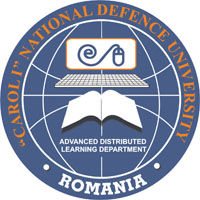SOFTWARE APPLICATION FOR THE DEVELOPMENT OF IDEA DIAGRAMS USED IN TECHNICAL CREATIVITY
SOFTWARE APPLICATION FOR THE DEVELOPMENT OF IDEA DIAGRAMS USED IN TECHNICAL CREATIVITY
Author(s): Neculai Eugen SEGHEDIN, Dragoş-Florin CHITARIUSubject(s): Education
Published by: Carol I National Defence University Publishing House
Keywords: creativity; idea diagrams; inventics; technical creation basis
Summary/Abstract: In technical creativity three categories of techniques and methods of creation were structured: logical, intuitive and logical-intuitive. Idea diagrams, alongside morphological matrixes and the generalized object of creation are part of logical methods for creation. Generally, through idea diagrams it can be understood a plane graphical representation of existing correlation between various knowledge representation forms. Accordingly to the principles, terminology and general theory of technical creation, the idea diagrams are an open graphical representation, arborescente type containing structured information on the state of science and technology in a domani. In the paper is presented an software application for the elaboration of idea diagrams, accordingly to a methodology in eight steps previously made. The application provides access to sources of information, databases that grow continuously. The main function of the application is the actual plotting of the chart by selecting the main number of solutions for the criteria and sub-criteria of classification in the domain and designation of those. The diagrams allow the pairing of images with the representative solutions for each sub-criteria classification criteria. Moreover, for each criteria or sub-criteria database solutions can be structured that define the current state of knowledge. In this way, it can be created a complete picture of the knowledge state in the structured domain. The proposed application removes the main disadvantage of classically drawn diagrams, which consists of the limited number of solutions that could be included in the chart. Thus, it can be created a structured picture of a complete state of knowledge in the domain. The proposed application removes the main disadvantage of classically plotted diagrams which consists in the limited number of solutions that could be included in the chart.
Journal: Conference proceedings of »eLearning and Software for Education« (eLSE)
- Issue Year: 11/2015
- Issue No: 03
- Page Range: 511-515
- Page Count: 5

